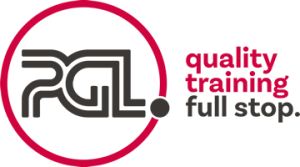Why a CAT and Genny Alone Won’t Stop You Hitting Those Services
Even today, utility strikes remain a persistent challenge for many contractors. It’s estimated there are around 60,000 strikes each year—and that’s only the reported cases.
Often, discussions about strikes focus on the Cat and Genny. It’s typically about whether the Genny wasn’t used, the Cat wasn’t used in avoidance mode, or if training was conducted on the wrong model (Cat4 instead of Ecat4). While these issues may or may not be significant to a strike at that moment in time, there’s a bigger picture that needs to be addressed to truly understand why strikes continue to happen.
Let’s start by reminding ourselves of what a Safe System of Work (SSOW) really entails. It’s a term we use frequently, but at its core, an SSOW is a comprehensive set of documents and procedures that guide a task safely. For utility works, it incorporates all the essential elements—RAMS, Permits,competency, equipment, PPE, and so on.
Complete Approach to SSOW
When working around buried services, a complete approach to SSOW is required. Relying solely on a CAT and Genny is insufficient. The task must be overseen by a competent Supervisor or Manager who understands the SSOW and can identify the critical moments that ensure safe practice.
To tackle this more effectively, consider the PREVENT STRIKES framework:
PREVENT
- P – Planning:
Begin with thorough planning. As they say, “Plan the dig, and dig the plan.”
- R – Read the Data:
Actively read data from the Cat and Genny—don’t wait for a strike to interpret the information.
- E – Equipment:
Use the best equipment available, whether that’s a vacuum excavator or the latest EML on the market.
- V – Verify Service Locations:
Verify the positions of underground services using multiple methods, such as additional scans or radar, to reduce uncertainty and mark up correctly.
- E – Empower to Stop:
Cultivate a culture where team members feel empowered to say “STOP” if they see potential risks, or if they haven’t been briefed or signed onto RAMS or permits. Just bloody STOP!
- N – Necessary Training:
Ensure all team members have comprehensive training. More than a quick overview, they need thorough, consistent instruction. See our recommendations later on in this article.
- T – Technique for Safe Digging:
Over half of utility strikes actually occur from using hand tools incorrectly. Approach the dig with the right techniques, the right approach, and tools.
STRIKES
- S – Toolbox Talks:
Regularly review CAT and Genny procedures. Pull the equipment out during toolbox talks and run a hands-on demo. Be honest—when was the last time someone senior on site did that?
- T – Tailored Daily Briefing:
Conduct a daily briefing specifically dedicated to buried services before work begins. This briefing should cover the specific risks, service locations, and safety protocols for the day’s tasks, ensuring everyone is fully aware and aligned on safe digging practices.
- R – Review Drawings:
Always read and understand the drawings before digging. Don’t start works without them.
- I – Implement Safe Digging Packs:
Develop a pack containing dedicated operating procedures, guidance, and instructions for safe digging.
- K – Keep Drawings Updated:
Maintain up-to-date drawings, whether they’re 90 days, 28 days, or sooner. Update plans with any modifications as the work progresses.
- S – Supervisors:
Competent supervisors are critical. They should fully understand the SSOW and be capable of supervising from start to finish. Investing in their training can make a substantial difference in safety outcomes. See our recommendations in this article. Don’t assume they already know and understand it—train them to ensure they do. Otherwise, the responsibility may be overlooked. Give them confidence in the subject with deeper knowledge of utilities and key equipment like detection tools.
Following these steps will help contractors establish a strong foundation for preventing strikes—not just relying on a CAT and Genny, but fostering a comprehensive, safety-focused approach that mitigates risks.
Other Considerations
PAS 128 – When planning and executing work near underground utilities, the consideration of PAS 128 is essential. PAS 128 provides a standardised approach for the detection, verification, and location of underground utilities, ensuring accuracy and minimising the risk of service strikes. By following PAS 128, contractors can create a clear, consistent framework for surveying, improve safety through enhanced planning, and ensure regulatory compliance. This standard not only helps in managing risks effectively but also assures clients and stakeholders that due diligence has been taken to protect both public infrastructure and the workforce. Of course, it is not mandatory and must be relative to the size of the task.
Keep it simple—don’t complicate things with unnecessary titles, armbands, and other distractions. Focus on a straightforward, effective, and clear approach.
Construction Phase Plan
When developing the construction phase plan, as the Principal Contractor, it’s essential to set a strong foundation for the entire project. Lead by example by defining clear standards early on, and make the expectations for quality, safety, and efficiency well understood. Specify key equipment requirements and mandate essential procedures at the outset to ensure consistency across all teams and trades. This proactive approach not only reinforces a culture of safety and accountability but also streamlines project execution by minimising miscommunication and setting a unified standard from day one.
Support and Training
Support is available from organisations like PGL Midlands, LSBUD, and USAG, alongside valuable guidance documents such as HSG 47. These resources provide essential information and best practices for safely managing underground utilities and mitigating risks on site.
Training, Continuity of training across all processes is crucial, particularly when it comes to the CAT and Genny. We recommend the EUSR 1 & 2 courses for all operatives involved in locating utility services or digging to expose them. For supervisors, the EUSR Supervising Utilities Construction Operations course is essential. Each of these courses shares a common thread, ensuring a consistent understanding of safety practices from Supervisors to Operative. Additionally, PGL Midlands is the only approved provider of this course and can integrate your own templates into the training, further enhancing continuity and relevance for all learners. Participants in the Supervisor course will also receive a comprehensive handbook template, a specific daily briefing sheet, and a set of toolbox talks to facilitate effective communication and safety practices on site.
Competency Frame Work
When working in or around Utilities, we recommend the following training Competency Framework:
Client/Contracts/Managers/Supervisors
Course Title: EUSR Supervision of Utilities – Construction Operations

Operatives using Locating Equipment (CAT & Genny)
Course Title: EUSR Category 1 – Locate of Utility Services (HSG 47) CAT & Genny

Operatives Excavating (Safe Digging)
Course Title: EUSR Category 2 – Implement Safe (Excavation) Digging Practices

If you would like to learn more about how you can achieve a zero-strike philosophy and improve procedures, confidence, and competency within your team, please reach out at 0121 240 0375 or email us at [email protected].
Check out our EUSR Category 1 – Locate of Utility Services (HSG 47) CAT & Genny Course.
